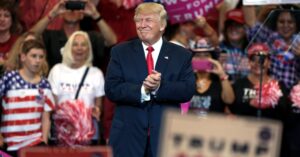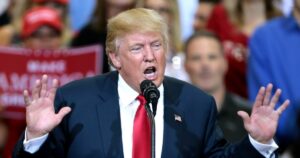Military Academy Boards Restructured Amidst Leadership Shift
President Donald Trump has ordered the immediate overhaul of oversight committees at U.S. military service academies, a decision aimed at addressing perceived ideological shifts.
Trump aims to counter what he sees as a leftward drift within the nation's military academies by appointing new leadership focused on military preparedness and traditional military values.
This action was communicated through a post on Truth Social and impacts the Boards of Visitors for the Army, Air Force, Navy, and Coast Guard. These boards offer strategic insights into the workings of these institutions, including issues of morale, discipline, curriculum, and operational policies.
Trump Cites Ideological Changes as Cause
President Trump articulated his reasoning, citing what he described as a "leftist takeover" of the academies in recent years. He contends that these shifts undermine the core mission of these institutions. This restructuring starts with the appointment of what Trump describes as more suitable candidates to bolster military strength and tradition.
In his announcement, Trump pronounced the objective to establish the "strongest military" in the nation's history. He believes reshaping these boards with new individuals aligned with his vision will act as a foundation for this aspiration.
The decision comes shortly after executive orders signed by Trump last month. These actions dissolved diversity, equity, and inclusion (DEI) initiatives in the Department of Defense, aiming to prioritize military readiness and coherency.
Defense Secretary Hegseth's Role in the Transition
Further clarifying this pivot, Defense Secretary Pete Hegseth has been actively involved in discussions with academy leadership. Just last week, Hegseth met with representatives from West Point, the U.S. Naval Academy, and the U.S. Air Force Academy. He outlined a renewed focus on traditional subjects and military toughening.
Positions on subjects like Social Justice and DEI are being replaced by an emphasis on History, Engineering, and War Studies. According to Hegseth, these are vital for restoring what he refers to as the "warrior ethos" within the Department of Defense.
Hegseth expressed his satisfaction with the progress already being made by the academies. He plans to visit each institution to further engage with how these reforms are being implemented.
Boards of Visitors to Undergo Changes
The restructuring involves the dismissal and forthcoming reconfiguration of the Boards of Visitors. These boards provide significant oversight by examining diverse aspects, such as morale and discipline, within these military institutions.
In their previous formation, the boards consisted of 15 members. Six of these were presidential appointees, while the vice president, House speaker, and various congressional committees appointed the others.
The move to appoint new board members is expected to shift the academies' emphasis towards what Trump considers more essential facets of military education and training.
A Pursuit of Traditional Values in Military Training
Trump's actions underscore a broader intent to align the academies more closely with traditional military values. This direction looks to cultivate a sense of discipline and prepare cadets for future challenges in a manner the former president deems appropriate.
Despite criticism from various quarters concerning the political undertones of these changes, Trump's measure is rooted in his firm belief that a strong military begins with proper training and fundamental values. This recalibration aims to fulfill that vision.
The president's realignment emphasizes bolstering cadets' readiness for military service. It's suggested that the shift will enable the U.S. military's potential to be fully realized.
Anticipation and Caution from Stakeholders
As these transformations unfold, stakeholders within the academies and beyond are closely monitoring their impact. Among those concerned are educators, policymakers, and the broader defense community.
Some fear these changes may inadvertently demote the inclusivity and diversity previously advocated by the boards. Others, however, advocate for the return to what they perceive as essential military traditions and knowledge.
The announcement and subsequent actions suggest a significant reshaping of the governance structures overseeing America’s premier military educational institutions. Questions and discussions are likely to continue as the changes take root in the coming months.




